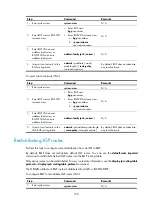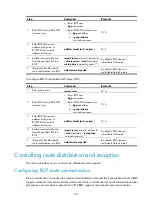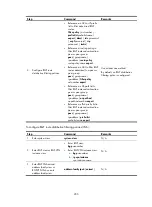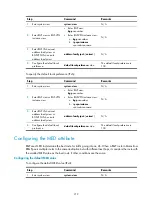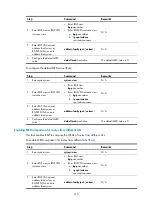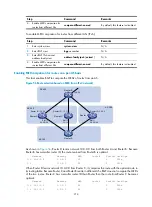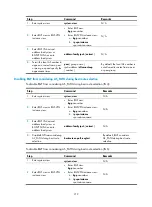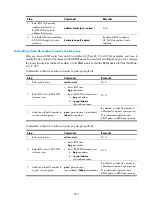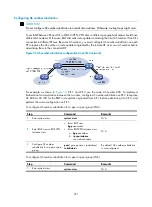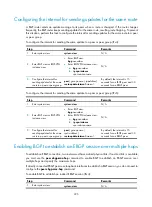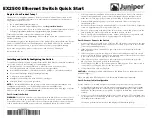
210
Step Command
Remarks
3.
Enter BGP IPv4 unicast
address family view or
BGP-VPN IPv4 unicast
address family view.
address-family ipv4
[
unicast
]
N/A
4.
Specify a preferred value for
routes received from a peer or
peer group.
peer
{
group-name
|
ip-address
}
preferred-value
value
The default preferred value is 0.
To specify a preferred value for routes from a peer or peer group (IPv6):
Step Command
Remarks
1.
Enter system view.
system-view
N/A
2.
Enter BGP view or BGP-VPN
instance view.
•
Enter BGP view:
bgp
as-number
•
Enter BGP-VPN instance view:
a.
bgp
as-number
b.
ip vpn-instance
vpn-instance-name
N/A
3.
Enter BGP IPv6 unicast
address family view or
BGP-VPN IPv6 unicast
address family view.
address-family ipv6
[
unicast
]
N/A
4.
Specify a preferred value for
routes received from a peer or
peer group.
peer
{
group-name
|
ipv6-address
}
preferred-value
value
The default preferred value is 0.
Configuring preferences for BGP routes
Routing protocols each have a default preference. If they find multiple routes destined for the same
network, the route found by the routing protocol with the highest preference is selected as the optimal
route.
You can use the
preference
command to modify preferences for EBGP, IBGP, and local BGP routes, or
reference a routing policy to set a preference for matching routes (for routes not matching the routing
policy, the default preference applies).
If a device has an EBGP route and a local BGP route to reach the same destination, it does not select the
EBGP route because the EBGP route has a lower preference than the local BGP route by default. You can
use the
network short-cut
command to configure the EBGP route as a shortcut route that has the same
preference as the local BGP route so that the EBGP route will more likely become the optimal route.
To configure preferences for BGP routes (IPv4):
Step Command
Remarks
1.
Enter system view.
system-view
N/A



